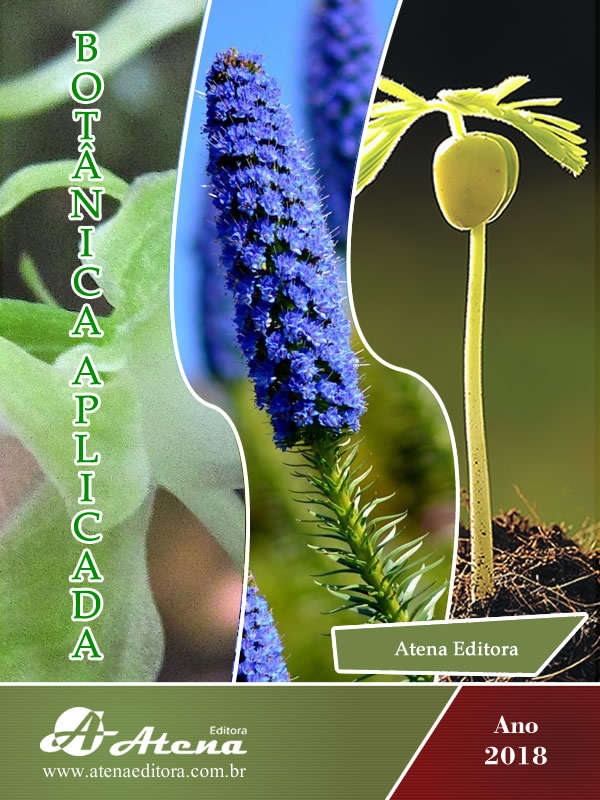
PRODUÇÃO DE FITÓLITOS EM PLANTAS CARACTERÍSTICAS DA CAATINGA
Fitólitos são biomineralizações de sílica ou cálcio que se precipitam no interior ou entre as células vegetais durante os processos metabólicos, conferindo à planta uma série de benefícios e vantagens evolutivas. O bioma "Caatinga" cobre cerca de 11% do país e é caracterizado por um clima semiárido com vegetação adaptada a altas temperaturas, baixa precipitação e distribuição irregular de chuvas ao longo do ano. A crença injustificada de que a Caatinga é um ecossistema pobre em biodiversidade e endemismo, o torna o bioma brasileiro mais subvalorizado e botanicamente desconhecido. Embora algumas áreas tenham sido bastante antropizadas, a Caatinga apresenta diversas áreas fitogeográficas e um número significativo de táxons raros e endêmicos. Neste trabalho foram analisadas 33 plantas de 16 famílias com o objetivo de identificar e caracterizar a presença de fitólitos em espécies características do bioma da Caatinga, a fim de estabelecer coleções de referência modernas que permitirão realizar posteriores estudos de reconstituição ambiental que utilizem esse indicador, contribuindo, assim, para um melhor conhecimento deste bioma. As amostras foram coletadas na Depressão Sertaneja Setentrional, nos estados do CE e RN. Os resultados mostraram que as plantas da Caatinga, em geral, produzem muitos fitólitos, predominando a silicificação de traqueídeos, fitólitos poliédricos e globular granulate, além de tricomas. A deposição de Si em suas células pode ser uma estratégia de sobrevivência neste ambiente. Apesar de algumas limitações, os fitólitos se mostraram ferramentas promissoras para o melhor conhecimento da vegetação da região, bem como sua utilização para estudos paleoambientais no bioma.
PRODUÇÃO DE FITÓLITOS EM PLANTAS CARACTERÍSTICAS DA CAATINGA
-
DOI: Atena
-
Palavras-chave: Caatinga, biomineralizações, semiárido, silicofitólitos
-
Keywords: Caatinga, biomineralizations, semi-arid, silicophytoliths
-
Abstract:
Phytoliths are biomineralizations of silica or calcium that precipitate within or between plant cells during metabolic processes, providing the plant with several benefits and evolutionary advantages. The Caatinga biome covers about 11% of Brazil and is characterized by a semi-arid climate with vegetation adapted to high temperatures, low precipitation and irregular distribution of rainfall throughout the year. The unjustified belief that the Caatinga is a poor ecosystem in biodiversity and endemism, makes it the most undervalued and botanically unknown Brazilian biome. Although some areas have been considerably anthropized, the Caatinga presents several phytogeographic areas and a significant number of rare and endemic taxa. In this study, 33 plants from 16 families were analyzed in order to identify and characterize the presence of phytoliths in species characteristic of the Caatinga biome to establish modern reference collections enabling further environmental reconstitution studies that use this proxy, contributing to improved knowledge of this biome. Samples were collected in the Northern Sertaneja Depression, in the states of Ceará and Rio Grande do Norte. Results showed that Caatinga plants, in general, produce many phytoliths, with silicification of tracheids, polyhedral and globular granulate phytoliths predominating, along with trichomes. The deposition of Si in plant cells may be a survival strategy in this environment. In spite of some limitations, phytoliths have shown to be promising tools for improving knowledge on the vegetation in the region, as well as for use in paleoenvironmental studies in the biome.
-
Número de páginas: 20
- Sarah Domingues Fricks Ricardo


